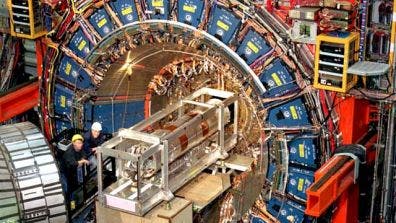Scientists at Fermilab’s Tevatron particle collider on Wednesday voiced excitement about the observation of a new particle.

The new particle, called Xi-sub-b, was first theorized by the Standard Model which predicted that the neutral particle should exist. Now, through a process which involved high-speed collisions in the Fermilab Tevatron particle accelerator in Batavi, a three-story house-sized, 6000 tone behemoth, scientists have managed to re-create the particle – just for an instance, though.
The particle could only be maintained for a mere instant before decaying into lighter particles. Scientists at Fermilab uncover these ephemeral particles by racing protons and antiprotons close to the speed of light around a 4-mile (6.3 km) ring. When the particles collide, the outpouring of energy disintegrates them into other
“It’s a little like looking at the periodic table of elements and finding a missing element,” said Fermilab physicist Pat Lukens, who gave a lecture Wednesday on the discovery. “It’s a particle that we expected to exist so it’s not a surprise, but it is the first observation of its type.”
Fermilab physicists claim the Xi-sub-b particle is a byron, meaning it consists of three fundamental particles called quarks – one of the fundamental building blocks of matter in the universe.. Specifically, the particle has a strange quark, an up quark and a bottom quark. The bottom quark is called a heavy bottom quark, making the neutral Xi-sub-b about six times heavier than a proton or neutron.
“It’s a baryon,” Lukens said. “A common example of baryons are protons and neutrons.”
He said the discovery marks just another accomplishment for the Tevatron, which is set to shut down this year after losing out on additional federal funds to continue its operation. The top quark was discovered at the Tevatron in 1995, which is the heaviest known elementary particle observed in nature.
RELATED: Antimatter mystery gets a hint
Fermilab’s Tevatron particle collider has been used to discovered and studied almost all the known bottom baryons. It was responsible for finding the Sigma-sub-b baryons (Σb and Σb*) in 2006, observed the Xi-b-minus baryon (Ξb-) in 2007, and found the Omega-sub-b (Ωb-) in 2009. The lightest bottom baryon, the Lambda-sub-b (Λb), was discovered at CERN.
Was this helpful?



